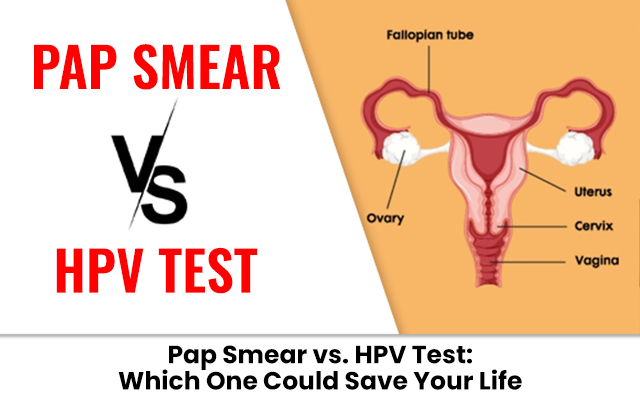Cervical cancer is one of the most preventable cancers if caught early. Unfortunately, in most cases, the early stages don’t show any symptoms. That is why screening is essential, even if you feel perfectly fine.
Two of the most important tests in the fight against cervical cancer are the Pap smear and the HPV test. They often get lumped together, but they are not the same thing. Each test has a unique role in detecting precancerous changes before they become severe.
So, what is the difference, and which one should you go for? Let’s break it down.
What Is a Pap Smear?
The Pap smear, or Pap test, has been around for decades and is a trusted screening tool. It checks for abnormal cell changes in the cervix that may lead to cancer.
Here is how it works
- During a pelvic exam, your gynecologist will collect cells from your cervix.
- These cells are then examined under a microscope to detect any signs of dysplasia (pre-cancerous changes) or cancer.
Why does it matter?
Pap smears are particularly effective in detecting precancerous lesions, the changes in cervical cells before they turn cancerous. Detecting them early gives you time to treat the issue before it develops into something more serious.
What Is an HPV Test?
HPV (Human Papillomavirus) is a group of viruses, and certain strains, especially HPV 16 and 18, are associated with nearly 99% of cervical cancer cases. An HPV test does not examine cell changes. Instead, it diagnoses whether high-risk HPV types are present in your cervix.
How it works
- It is done like a Pap smear. Your gynecologist will collect cervical cells.
- These cells are tested specifically for the DNA of high-risk HPV strains.
Why does it matter?
Even before cell changes occur, an HPV infection can be detected. This makes it an excellent test to assess your long-term risk of cervical cancer.
Key Differences between Pap Smear & HPV Test
What it detects:
- A Pap smear checks for abnormal changes in cervical cells, looking for signs of disease that might already be developing.
- The HPV test, on the other hand, looks for the presence of high-risk HPV strains that could potentially cause those cell changes in the future.
Purpose:
- The Pap smear is designed to find early warning signs of cervical disease, especially precancerous or cancerous cell changes.
- The HPV test focuses on identifying infections from high-risk HPV types, which are the leading causes of cervical cancer.
Ideal for:
- Pap smear is best for diagnosing current abnormalities in cervical cells.
- HPV tests are great for predicting future risk, especially for identifying silent infections that have not yet caused visible cell changes.
Which Test Do You Need?
That depends on your age, health history, and current test results.
- Ages 21–29: A Pap smear every 3 years is generally recommended. HPV testing is not routine unless results are unclear.
- Ages 30–65: You have three options:
- Pap test every 3 years
- HPV test every 5 years
- Co-testing (Pap + HPV together) every 5 years
If unsure, talk to a gynecologist who can suggest the right screening schedule for your risk profile.
Why Timely Screening Can Be Life-Saving?
India reports over 75,000 deaths due to cervical cancer cases annually, with a high percentage detected in advanced stages. Timely Pap and HPV tests can reduce these numbers significantly.
Regular screening helps:
- Detect cell changes early
- Identify HPV infections before symptoms appear
- Guide preventive treatments like colposcopy or LEEP procedures if necessary
Ignoring these simple, mostly painless tests can mean overlooking early intervention, and that is when risks increase.
Conclusion
Cervical cancer is highly preventable, but only if you consider routine screening. Many women neglect these tests due to discomfort, stigma, or simply not knowing they are necessary.
The first step is to book an appointment with a well-reputed gynecologist in Kolkata, like Dr. Pallab Roy. They can help you decide whether a Pap smear, HPV test, or co-testing is right for you and how often you need it.
It is not just about avoiding cancer. It is about taking good care of your health, making informed choices, and taking action before problems start.

